In my memory I keep going back to the tideline, where the trees washed below the water and the jellyfish were strewn on the sand. It is not the place where I am now, nor where I have been the past month. Instead I have been in the heat, in the haunts of my normal life, and by the lakes of Berlin, but it is the trees that keep coming back to me, and so this is what I offer you today.
During the two weeks I spent at the Mawddach Residency with Catherine Lovett, we had many adventures and many moments of magic. The one that calls to me now is the trees, the trees below the tide.
We arrived at the beach when the tide was low, at the recommendation of local charcoal artist Kate Boucher, whose work is beautiful and whose sensibilities I trust implicitly. We climbed up, from the low road, onto the wall at the back of the beach, and the sand was spread below us and the water was washing in, a white line of foam backed by blue. We saw them straight away; stumps sticking up through the sand. We went closer. Down by where the water climbed the sand in a fretwork of lace, there were trees.
Stumps, no more than calf high, but brown and sodden and still standing. We went forward to one in particular, its roots spread spider-like in the sand. Already the water was creeping over it; soon it would be gone. We left our shoes perched together on the pile of rocks that served as sea defence, and we went out, cold creeping up our ankles, to stand beside the limbs of a long dead tree. The lines on its trunk could still be seen, swirls of grain that somehow stayed despite the constant pressure of the water. Every twist of root was covered with seaweed, a forest of a new kind, that surged and swooshed with each wave that broke over it. The waves were coming in, water rising incrementally, and the sand swirled with the movement, clouding the water into a beige whirlwind, then pulling back, revealing the roots beneath.
All along the beach there were more stumps. Kate told us that, once, they were rare to see, only visible on a very low spring tide in the right conditions, but in 2019 Storm Hannah scoured the beach, blew the top layer of sand far away, dumped it in a new place on the coast. After that, at low tide, these trees were exposed. Stumps, but well preserved stumps, not fossilised, but still woody and still standing here, many thousands of years after they first grew. The Borth forest is dated from 1500 bc. Now we can walk right up to them. Think of all the things these trees, that now stand like sentinels in the sand, have seen.
The water was filled, too, with jellyfish, the biggest I have ever seen. Tentacles frilled with purple, translucent hoods rippling as the wave pushed them up the shore, stranding them like pale ghosts on the sand. They were the population of this new place, half water half forest, floating through the remains of what once would have been towering trees.
There is a legend that the land of Cantre’r Gwaelod lies here in the bay, beneath the waves. The story goes many ways - I have spoken, before, about the shifting nature of stories and how that is part of their magic. One story is that Seithennen, the watchman of the city, was drunk one night and forgot to lock the gates of the walled city. When the tide rose, the city was flooded. The water rose above it, the waves surged down the streets, and it was lost. Another version is that that land was drowned when the priestess allowed a fairy well to overflow. Yet another, a muddling together of the two, is that Seithennen was a visiting king, intent on distracting the fair Mererid, who was in charge of operating the sluice gate. He succeeded; the land was drowned. Could these stumps be a forest from the fringes of a civilisation lost to the waves?
I am working on a new novel and I am filling myself with stories of the sea, with places that are lost. I have just begun a beautiful book by Lisa Wollett called ‘Lost to the Sea.’ In it, she mentions that scientist can now analyse a grain of sand to discover when it was last exposed to sunlight. There is so much history buried along our coasts, so many layers - quite literally. Our island is a shrinking one and while the waves conceal what was once lost, they also, once in a while in a great scouring storm, reveal secrets that they have held to for the longest time. Our edges are not stable. The land beneath our feet is uncertain. It is shifting and it is rich with memory of what once was, and as the tide shifts higher and the waters rise, we add our own layers to it.
If you can support my work with a subscription, it would mean the world. Alternatively, if you have enjoyed this piece, consider sending me a small tip on Ko-Fi.
You can also take a look at my sister Substack. Care Connection will be a place to celebrate the often unseen, often overlooked work of carers - to celebrate the commitment, the connection, and the joys of caring, as well as acknowledging the challenges. I’m looking for contributors, and planning on just one post a month, perhaps a few more while I’m starting out, but you won’t be inundated! If you like Wild Quiet Folk, especially the interview posts, I hope you will like Care Connection too.





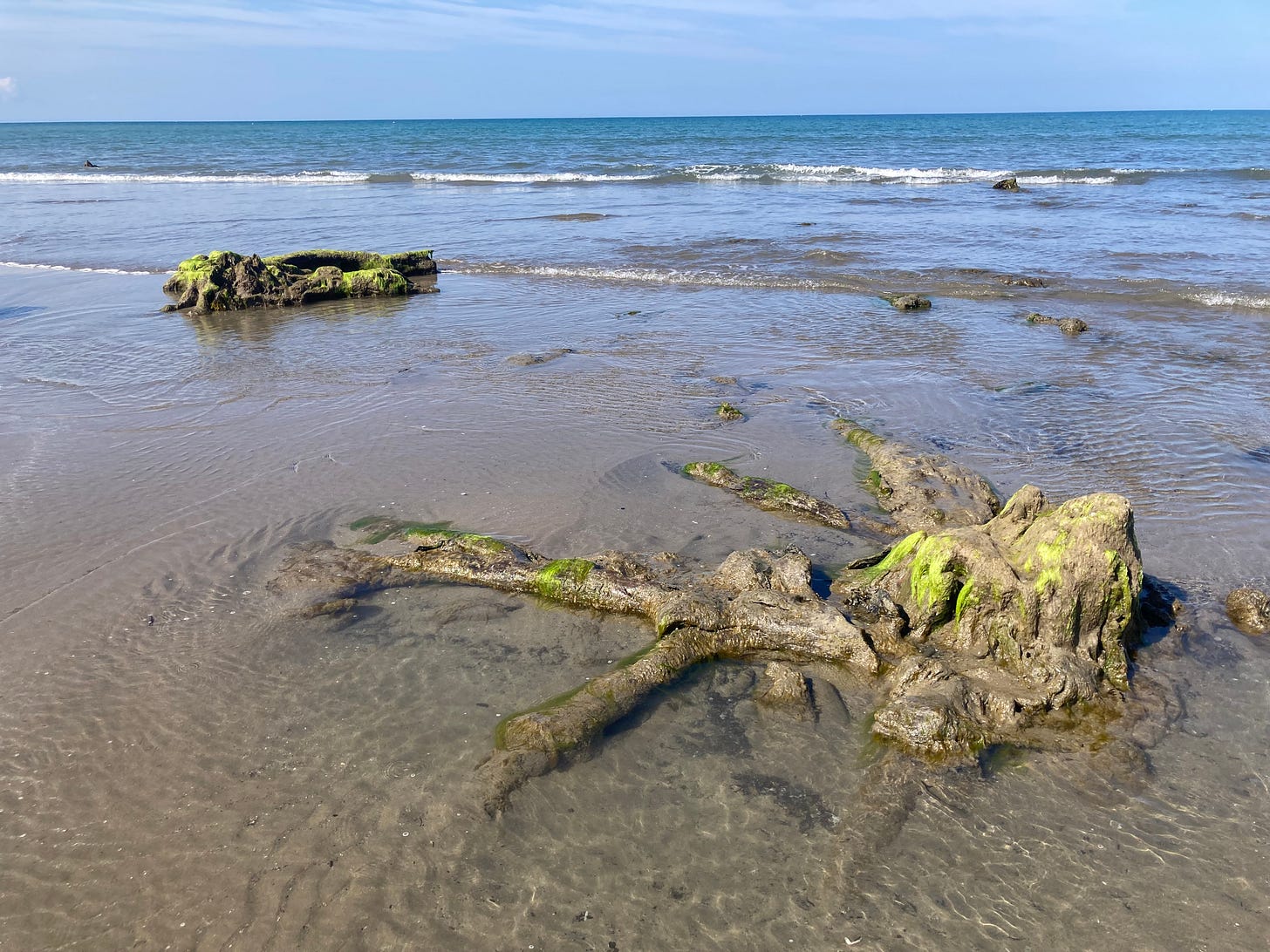
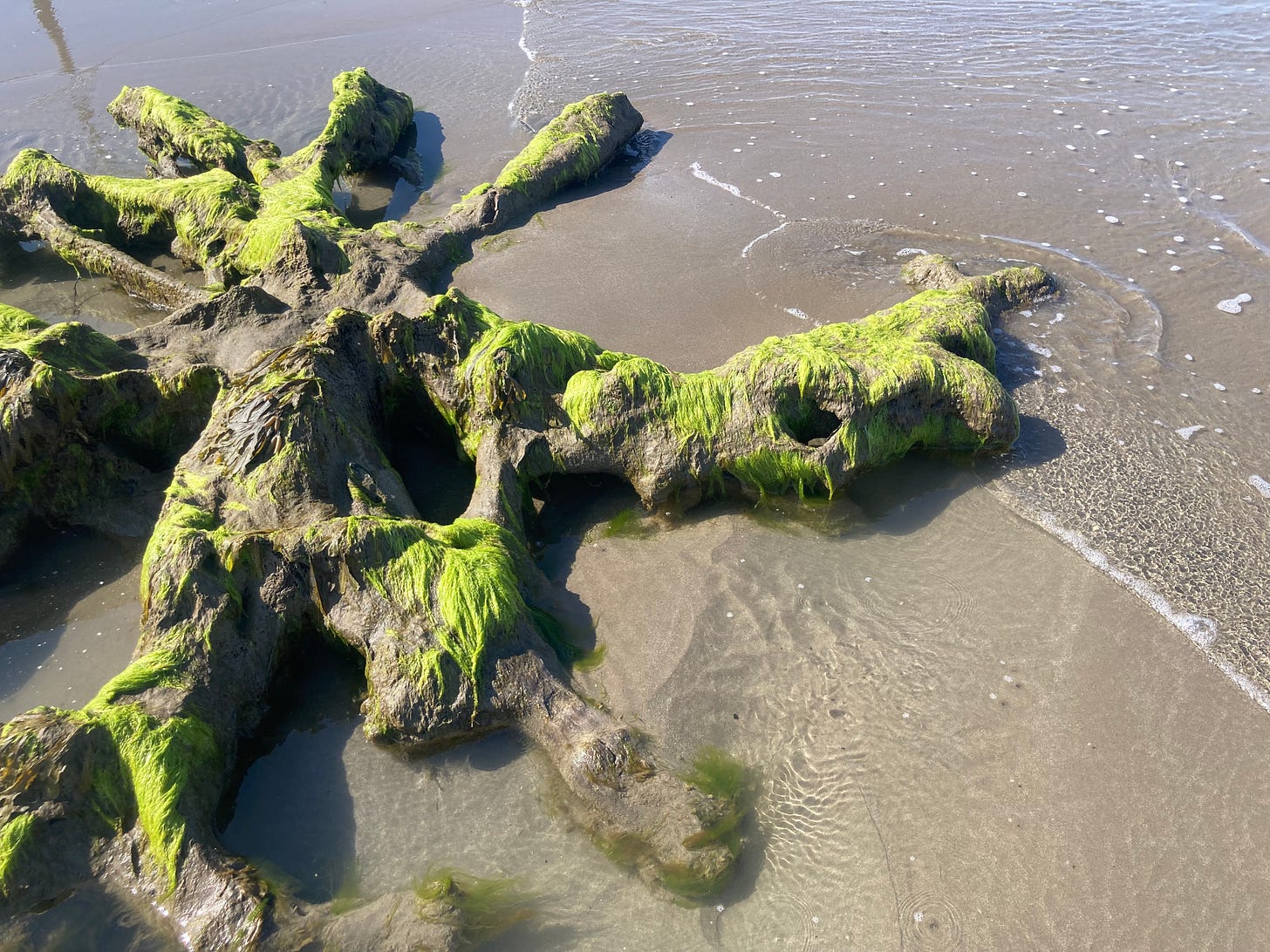
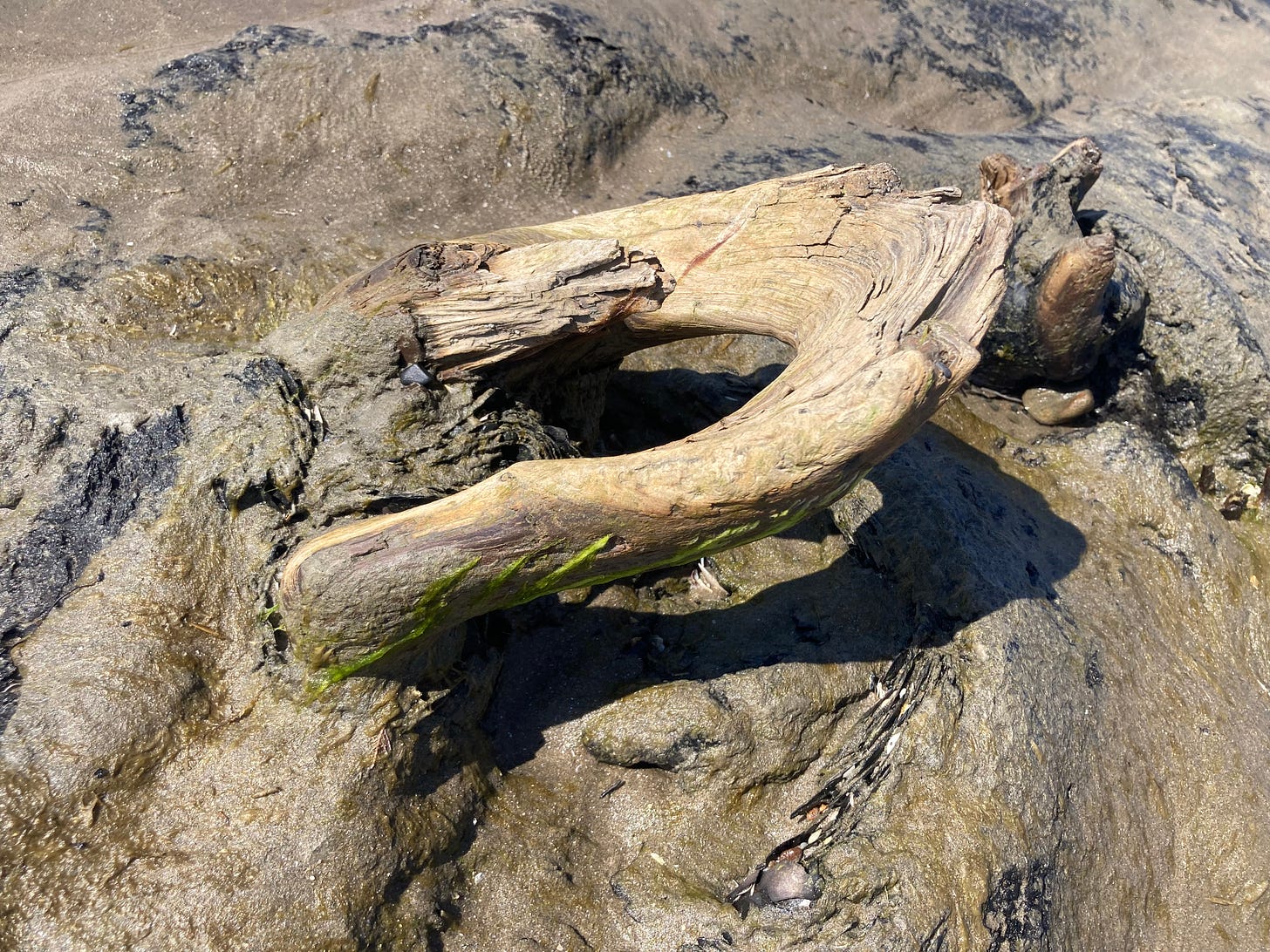
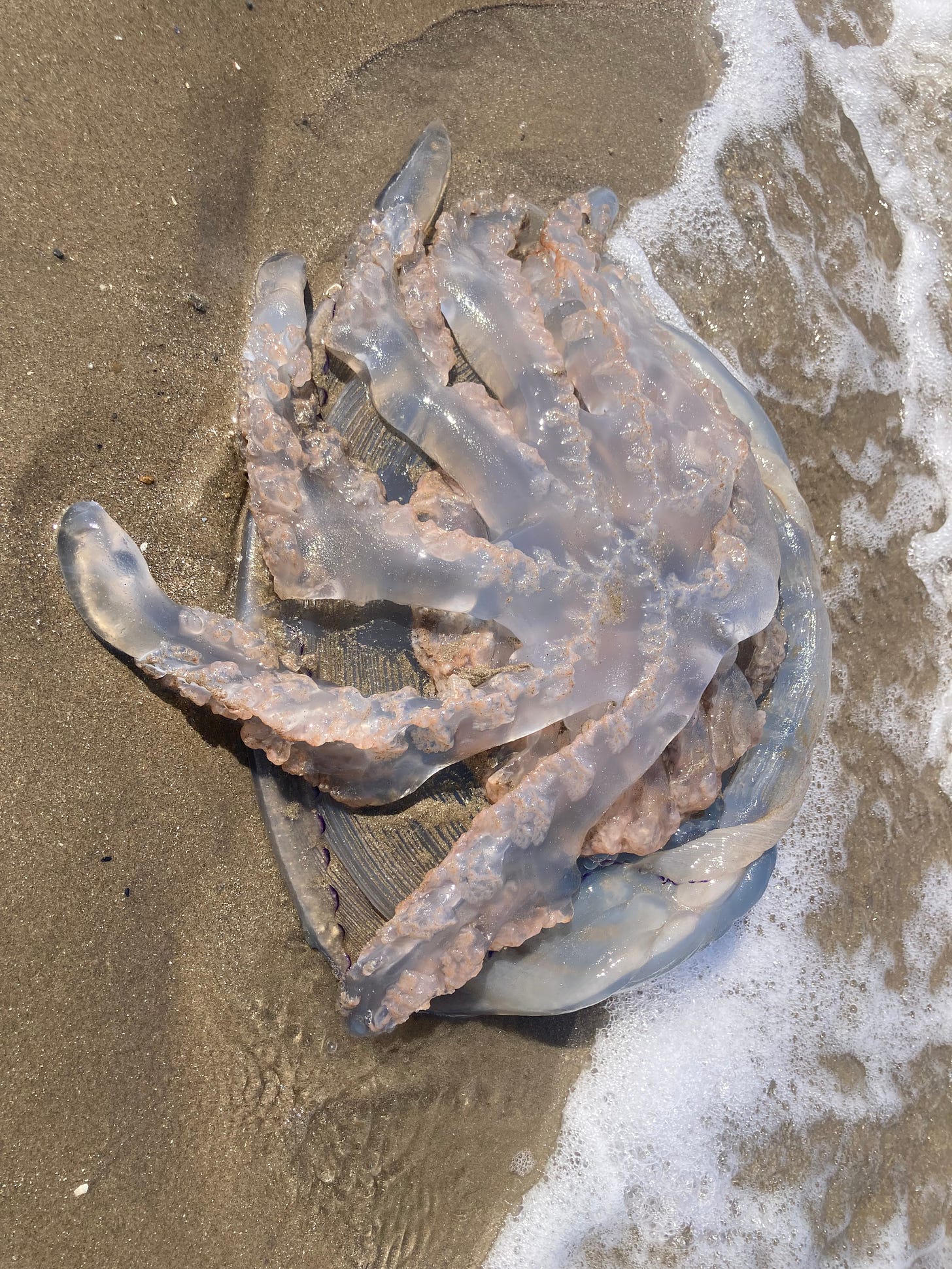
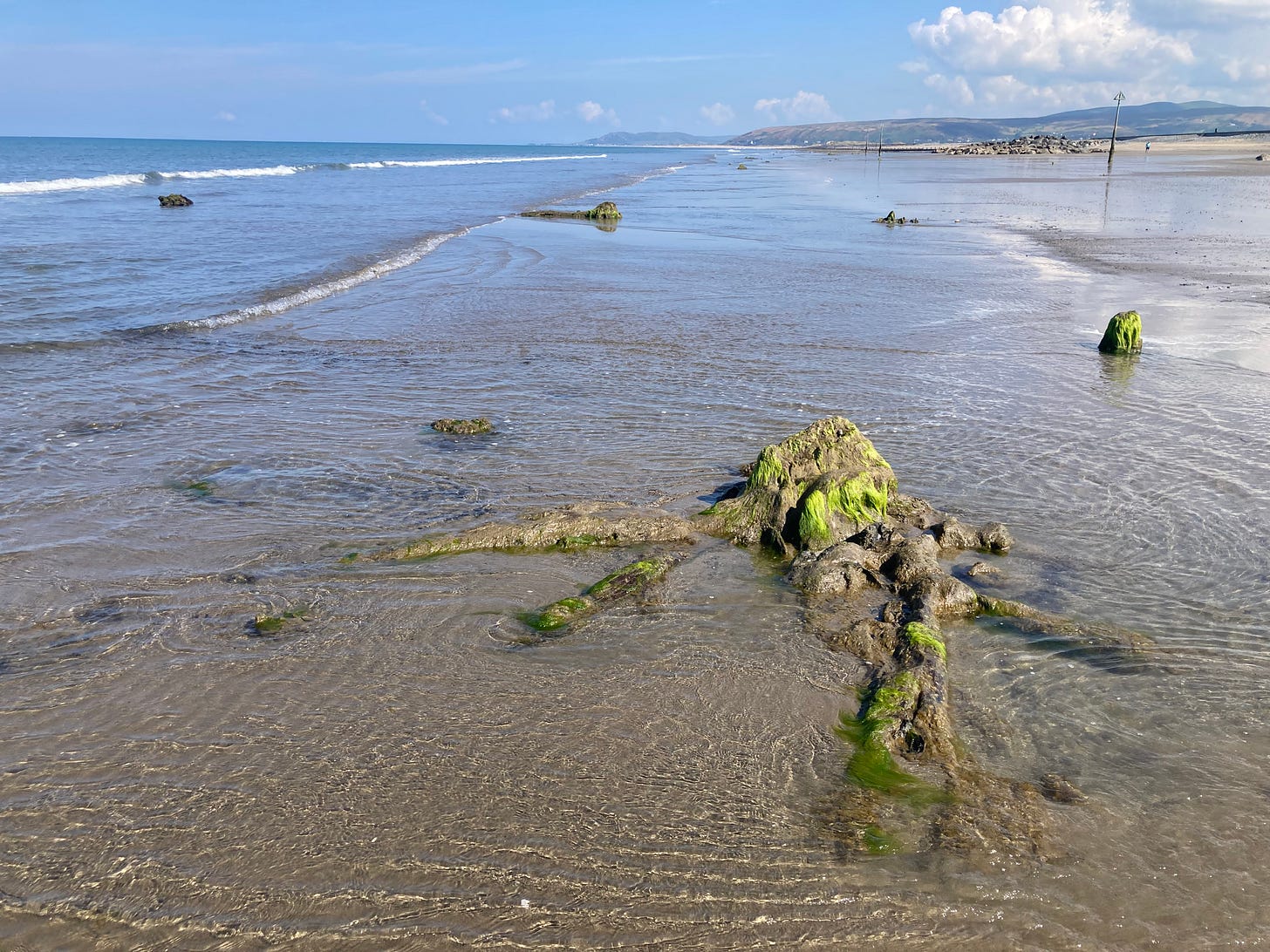

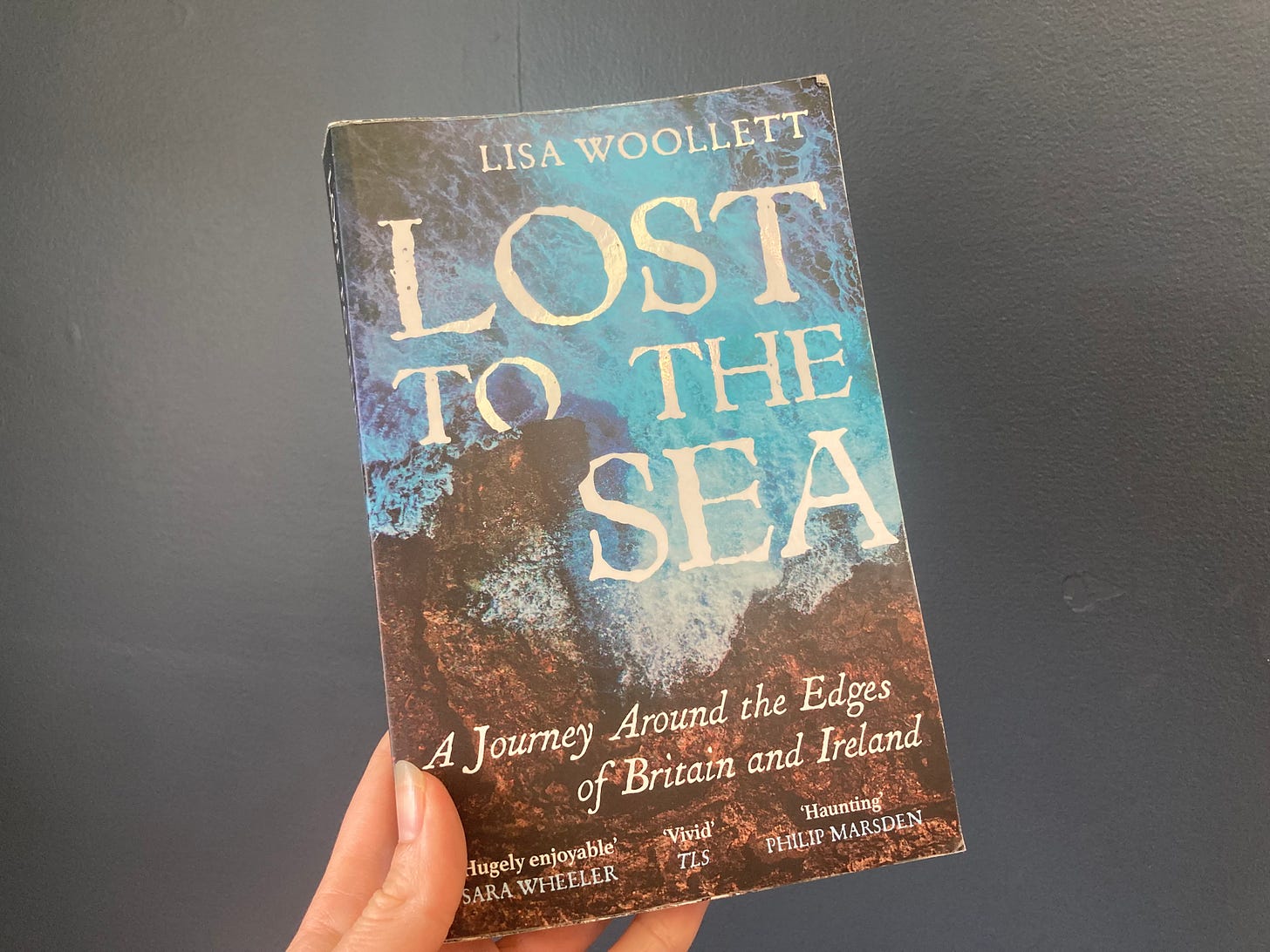
Such a magical coastline, so many stories. Have you read Caryl Lewis' "Drift"...a modern take on the Selkie myth, set her on the west coast?
These ancient roots are wonderful….interesting that they are now permanently exposed there. Here across the sea on the coast of southern Maine, there are a few beaches where they are exposed briefly during especially erosive winters, but then are covered again within a month or so. In the places with roots, they are in peat beds, which are exposed then as well. In addition to these old forests (which used to be on the edges of marshes just above the tide line), there are a few remnants of shipwrecks, and one time I came across the upper rim of a wooden barrel just poking out a few inches, with the boards of the barrel’s sides each sculpturally worn in different curvaceous patterns just above the sand….